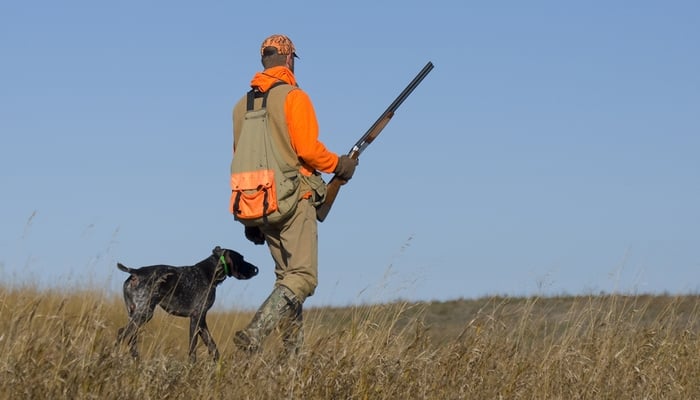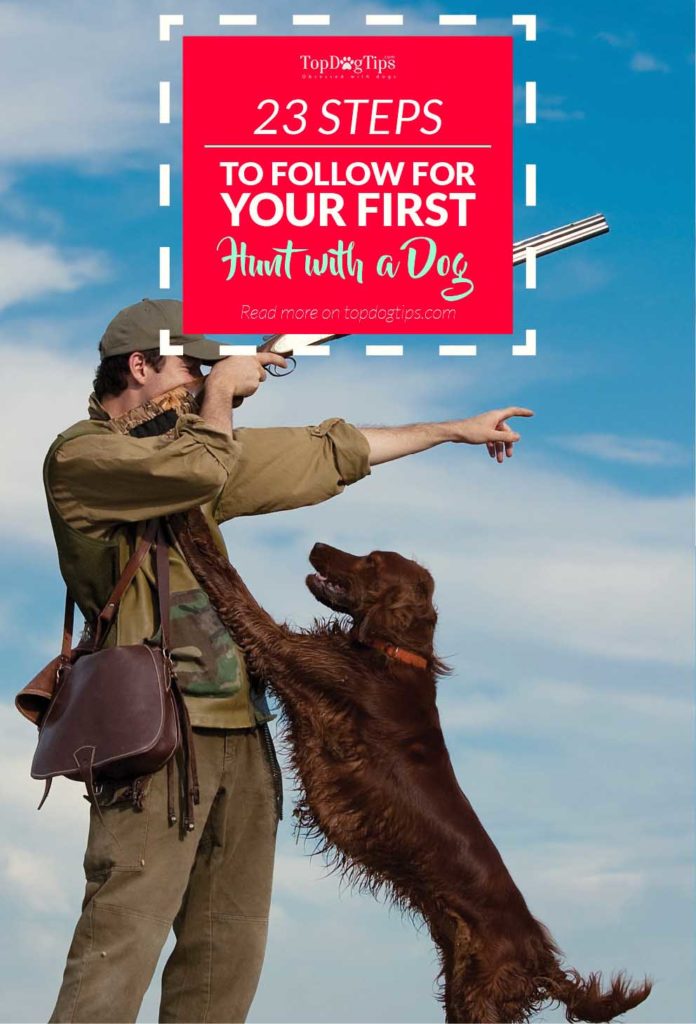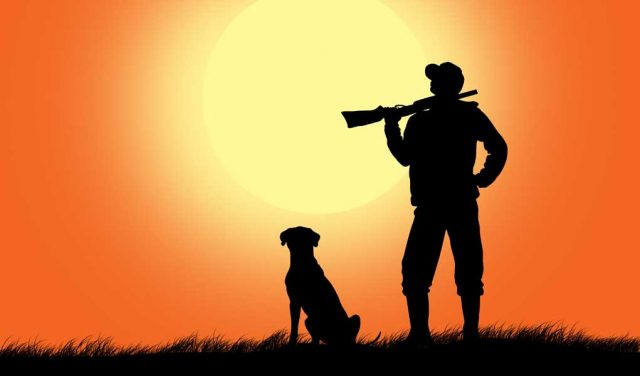
Table of Contents
- 23-Step Checklist to Follow for Your Very First Hunt with a Gun Dog
- Preparing for the Hunt
- 1. Know your dog’s obedience level
- 2. Watch your dog for signs of illness or injury
- 3. Check the length of your dog’s nails
- 4. Ensure that he is familiar with everything
- 5. Update preventatives and vaccinations
- 6. Check the batteries
- 7. Prepare your and your dog's first aid kits
- 8. Ensure Fido has the proper ID
- 9. Feed a dog beforehand (but not too much)
- 10. Check the weather
- 11. Are dogs allowed?
- 12. Obtain the right permits
- Arriving at the Hunt Site
- During the Hunt with a Dog
- After the Hunt with Your Dog
- Preparing for the Hunt
Even with the most well-trained dog by your side, going on your first canine-assisted hunt can be nerve-wracking. With the popularity of pets growing exponentially, more and more avid hunters are using gun dogs, and rightfully so—the benefits are incredible. But you need to know how to hunt with a gun dog, and this checklist below will help to ensure you're on the right track.
If you're going out on your very first hunt with a gun dog, you'll need to begin preparations before you get out there. Your hunting buddy—which hopefully is one of the best hunting dogs – must absolutely be trained for a hunt. An untrained gun dog could lead to a terrible disaster, resulting in you or your Fido getting injured, lost, and whatnot.
There is also quite a list of things you'll need to do after the hunt ends. After all, it will be a lengthy adventure for the two of you. These things may seem minuscule and relative, but if you're making hunting with a gun dog a habit, then start it right. You'll both be tired, but you will have to ensure that your pet is safe and clean before you let him rest.
“I love to hike, but I worry about safety in the woods during hunting season. For people whose animals go into the woods or live close to hunting areas, there are several things that can help minimize the risks the season brings.” – Dr. Brian Collins, DVM, Cornell University’s Hospital for Animals
Vets at Cornell University have provided some essential tips on how to ensure safety when hunting with dogs, but we've expanded this further with additional tips and advice.
RECOMMENDED: 30 Most Useful Best Gun Dog Supplies for Game Hunters
23-Step Checklist to Follow for Your Very First Hunt with a Gun Dog
Preparing for the Hunt
1. Know your dog’s obedience level
…and be confident in it. A dog that is not immaculately trained for hunting work is not going to excel and will likely end up being a danger at the hunt site, not an assistant.
2. Watch your dog for signs of illness or injury
If your pet has a preexisting issue and you take him hunting anyway, it may hurt him further or impede his ability to perform at the hunt site. This is unlikely to result in a successful or trouble-free hunting experience.
3. Check the length of your dog’s nails
Many hunters completely ignore this, but it's as important as checking your car's oil before a long trip. Make sure that your canine's nails are not so long as to cause injury to your dog. If necessary, trim his nails before taking him out on the hunt. Even gun dogs need to be properly groomed to be most effective.
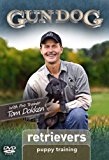 4. Ensure that he is familiar with everything
4. Ensure that he is familiar with everything
He needs to be familiar with anything that he may be exposed to at the hunt site. This can include boats, strangers, unique wildlife, or unique terrain. For this part, you should have already trained your canine to be a hunting gun dog. If you haven't, there are wonderful resources like these DVDs or books (there are plenty more other ones, too).
5. Update preventatives and vaccinations
Check with your vet to ensure that Fido has all the preventative treatments and vaccinations required to be safe in the outdoors. Learn about the environment your dog is going to be exposed to and mention that to a veterinarian for extra tips and advice.
6. Check the batteries
If your pet is wearing a tracking collar or GPS device, be sure that the batteries are fresh. The last thing you want to do is lose him while on your first hunting adventure. With that in mind, a dog GPS collar is an extremely valuable tool for hunters with gun dogs, and most of them utilize it to great success. Here are the best GPS collars for dogs to look at.
7. Prepare your and your dog's first aid kits
Health is undoubtedly the first concern for both you and your canine when you're out in the field or forest. The first item on your list should always be a first aid kit for yourself, but if you're out there with a gun dog, make sure there are items for the dog, too. Check that your canine first aid kit is fully stocked with necessities and that nothing is outdated.
8. Ensure Fido has the proper ID
Check that your dog’s hunting collar has the proper identification on it and that the information on those tags is up to date. Dog ID tags are another valuable item that you can and should invest in (they barely cost anything) that will prevent losing a dog for good.
9. Feed a dog beforehand (but not too much)
Provide your dog with a calorie-rich meal about 2-3 hours before the hunt, but not right before the hunt. This will provide him the energy needed to go out and exercise but will avoid the risk of bloating and lethargy.
10. Check the weather
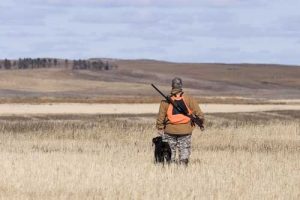 Know the weather and make sure that you have prepared to protect your dog from any adverse weather conditions or temperatures. Know the terrain as well, and understand what may be needed for your dog. Are you going into a rough area where he may need dog boots? A visibility vest or a life jacket? A dog harness is always a good idea.
Know the weather and make sure that you have prepared to protect your dog from any adverse weather conditions or temperatures. Know the terrain as well, and understand what may be needed for your dog. Are you going into a rough area where he may need dog boots? A visibility vest or a life jacket? A dog harness is always a good idea.
11. Are dogs allowed?
Surprisingly, to some, certain hunting sites will not allow gun dogs. So before you even plan anything, check that dogs are allowed in the hunting area you plan to visit. The popular animal laws website AnimalLaw.info has a ton of resources on this. They explain when, where, and why gun dogs cannot chase wildlife or assist hunters. Make sure to follow these to a letter and research your state's laws as well.
12. Obtain the right permits
Similar to the above, follow the laws and check that all permits for hunting are in your possession and up to date. Familiarize yourself with local laws and how a hunt with a gun dog should be carried out. These rules and laws differ from state to state. Texas State has a whole category dedicated to gun dogs; most other state websites will have a similar resource for you to confirm.
READ ALSO: What Are Breaking Scents for Hunting Dogs?
Arriving at the Hunt Site
13. Is the gear secure?
Ensure that your dog’s collar is securely around its neck. Check the fit of your dog’s hunting vest. Fit him with boots or paw protection if those things are needed based on the terrain (and they usually are). Check if you need any other supplies. Know where your first aid kit is located and make sure that it is easily accessible to anyone who may need it.
14. Do you have permission from the landowner?
State and federal laws aren't the only ones to keep in mind. If you're not on public property, then remember to check that you are on the land that you have been authorized to hunt on. Usually, it's fine, but just a few feet off, and you could be facing serious charges both for hunting and for letting your gun dog loose in the area.
15. It's not always about the hunt
Remind yourself that the first few hunts with your gun dog should always be focused on him and building a solid hunting foundation. This hunt is not about your “bagging” game but rather about training your dog as well as yourself on how to work with a gun dog.
SIMILAR: Dog Hiking Gear Guide – 13 Items You Need
During the Hunt with a Dog
16. Have reasonable expectations
Keep in mind that this is your dog’s first hunt (and possibly yours with a gun dog, too), so his performance is not going to be perfect, and it’s unfair to expect it to be. Even if you trained your gun dog, you need to incorporate a lot of real-life experience and practice into the first hunt to reinforce what your dog should expect from a day on the job and to refine his skills in the field.
Don’t be disappointed if your dog does not thrive on the hunt. Keep in mind that he has a personality of his own. While he may have taken well to training exercises, he may simply have no desire to take part in an actual hunt, but he will the more often you do this. So, if that happens, give him a second chance to experience hunting in a different environment on another day. If, after three or four hunts, your dog still shows no desire to hunt, accept that he simply doesn’t enjoy the experience and allow him to retire early.
17. Keep track of your dog
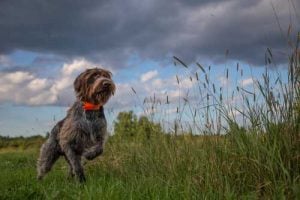 Always keep tabs on where your dog is at the hunt site. It is okay for him to be out of sight, but you must always have an idea of where the dog is. Make sure that other hunters in the area know where your dog is as well. This is for everybody's safety. Use GPS trackers (here are different costs) or other alternative solutions for this.
Always keep tabs on where your dog is at the hunt site. It is okay for him to be out of sight, but you must always have an idea of where the dog is. Make sure that other hunters in the area know where your dog is as well. This is for everybody's safety. Use GPS trackers (here are different costs) or other alternative solutions for this.
Keeping track of your dog also means knowing his response time. The average response time of your dog, combined with the distance of the hunted animal, will let you know when he needs your assistance. Even the most experienced dogs run into trouble on the hunt.
18. Remember to hydrate
Keep your dog hydrated at all times, but do not allow him to drink excessive amounts of water at any one time, or you risk bloating. The best way to do this is to have a special dog water bottle that you can easily carry with you and hydrate your dog. You can also reinforce good behavior with small treats and have a small pouch for those, too.
19. Praise a job well done
Motivate your dog with praise. Hunting dogs enjoy their work, but the number one reason they do this is the same they do everything else – to please their owners, according to research. Even the most enthusiastic hunter needs motivation and praise on a long day.
Also, while praising and petting your gun dog is important, make sure not to incorporate “play” into the hunting environment. You need to maintain complete control over your dog at all times while on the hunt; be strict and fair and save the play for home.
RELATED: 25 Smart Dog Breeds That Are Easiest To Train
After the Hunt with Your Dog
20. Perform an after-hunt check
Check your dog over thoroughly for any signs of injury. Make sure to check between the toes, under the tail, in the armpits, and other “secreted” locations as well. Look for ticks and other parasites when checking for injury. If you find any ticks, remove them immediately to reduce the risk of tick-borne diseases.
Also, check how your dog did in the terrain. Pay attention to his behavior after the hunt, look at his fur, his eating habits, and so on. This is important after the first few hunts. Make sure to check his paws because some areas are unforgivable to dogs' feet, for which you may need to use dog paw balms, waxes, or other types of paw protectors/remedies.
21. Give him a thorough brushing
Brush out your dog’s coat to remove any dirt or dust that can clog pores or otherwise cause skin irritation. This will also allow you to check formats or anything stuck in his coat. Finally, this is a great opportunity for the second round of tick check-ups.
22. Feed your Fido a celebratory dinner
Wait at least an hour before feeding your dog after returning from a hunt. This waiting period will help to reduce the chance of bloating due to eating after exertion. Ensure that he receives enough calories to replenish energy lost while out hunting.
Provide your dog with any pet supplements or medications he might require after a day of hunting. This includes joint support supplements like specific fish oils for dogs and pain relief if needed. It may also include medications and anti-inflammatories for dogs with any signs of arthritis or joint discomfort. Consult with a vet.
23. Let him rest
Allow your dog time to rest and recuperate. Hunting is hard work, even if he enjoys what he's doing, so make sure not to overwork your loyal companion. To keep a gun dog in top physical shape for hunting, provide him with necessities: a good bed, hip and joint care, and massages to loosen up hardworking muscles to help Fido recover if needed.
READ NEXT: 15 Vital Safety Tips for Training Dogs with Shock Collars


